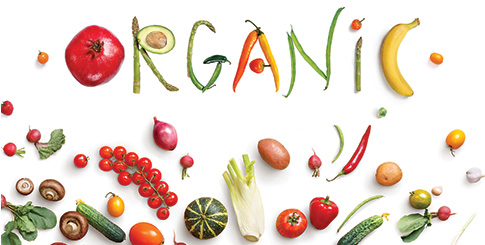Just fifteen years ago, organic products were generally overlooked in the food industry. Occasionally, a handful of organic vegetables or fruit would make an appearance in a tucked-away corner of the supermarket or on a small restaurant’s menu, but most were found at farmers’ markets or in pricey specialty stores.
These days, it’s hard to find a supermarket without a sizable organics section—even convenience and dollar stores have them. There are retail chains almost entirely devoted to the category, along with big players like Walmart and Costco stocking more and more organics. Some grocers have their own certified organic product lines—like Albertsons, which sold O Organics in its various banners (including Safeway, Jewel-Osco, Vons, and Acme) to the tune of more than $1 billion in sales last year.
Supply and Demand
When it comes to organic produce, sales have increased every year since 2007, with fruit proving the most popular choice. Helping to get more organic fruits and vegetables to retailers and in front of consumers are growers, trade groups, and no shortage of celebrity enthusiasts using social media campaigns, cooking shows, and urban gardening to help promote the category.
It should come as no surprise that California leads the country in terms of certified organic growers and acreage, with more than 2,700 growers and nearly $3 billion in sales, accounting for more than a third of U.S. total sales. And while Wisconsin and New York round out the top three in acreage, they were bested in sales by Pennsylvania, Oregon, and Washington.
Demand, however, continues to climb from coast to coast according to George Agorastos at Nogales, AZ-based Arizona Sky Produce, Inc., which sources domestically and from Mexico. His focus on organics gives him a ringside seat to the booming market. “There has, for sure, been a steady increase in organic sales,” he notes. “Both at our organic-only customers and at conventional customers who are starting or expanding their organic offerings.”
Consumers in Canada are pushing for more organics too—it is the fastest growing category in True North agriculture. The Canada Organic Trade Association says nearly two-thirds or 66 percent of Canadians are spending more of their weekly food dollars on organic products, mostly fruits and vegetables, up from 56 percent in 2016.
In Mexico, however, things are a little different: this North American trading partner is the leading exporter of organic commodities to the United States. There are more than 1 million acres across the country growing organic crops. Consumption of organics in Mexico is another matter: what isn’t shipped to the United States, Canada, or elsewhere is not necessarily a hot commodity for consumers, though there has been gradual growth.



